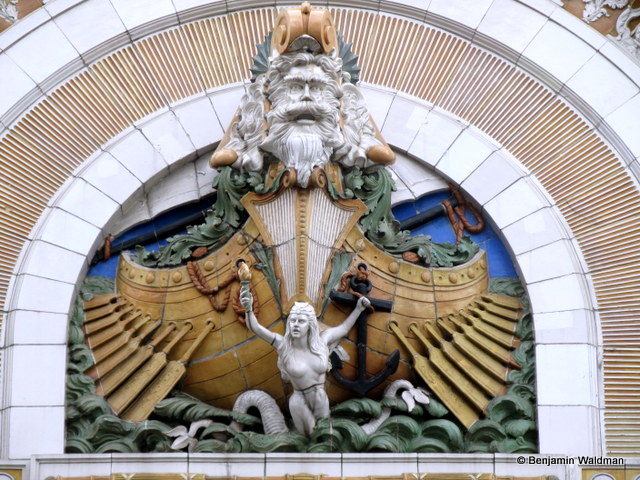4. William Fox Audubon Theater (Site of Malcolm X Assassination)

The 2,368 seat William Fox Audubon Theater, which is located between 166th and 165th streets, was constructed in 1912. The theater was designed by Thomas Lamb and in 1927, became one of the first theaters in the area to feature talkies. Lamb’s design still stands out, especially the ship’s prow, with the head of Neptune above the theater’s main entrance. The Audubon Theater became the Beverly Hills Theater and then the San Juan Theater before it infamously became the Audubon Ballroom. In the early 1970s, the theater closed and the building was used by a number of public agencies including the Department of Housing Preservation.
The second floor of the theater was constructed as a ballroom, which held dances and special events. As the neighborhood, and the times, changed so did the function of the ballroom. It became a place for those with political and social agendas to meet. Early efforts to organize New York City’s transit workers took place in the ballroom. It served as the original meeting hall for the IRT Brotherhood, an early transit union that every IRT worker was compelled to join, and later served as the meeting hall for the TWU (Transport Workers Union).
However, the Audubon Ballroom is most famous because of what occurred there on the twenty-first of February,1965. After leaving the Nation of Islam, Malcolm X founded the Organization of Afro-American Unity. Its weekly meeting were held in the Audubon Ballroom. During the Organization’s meeting on February 21, 1965, Malcolm X was assassinated while giving a speech. After the assassination, the Ballroom closed and was taken over by the City for non-payment of taxes. The former theater was purchased by Columbia, which began demolishing the structure in 1992. Before it was able to completely demolish the building, the University relented to public pressure and reached a compromise with local community groups. Columbia left most of the original Thomas Lamb facade (and even restored it) and provided space for the Malcolm X and Dr. Betty Shabazz Memorial and Educational Center within the building.







